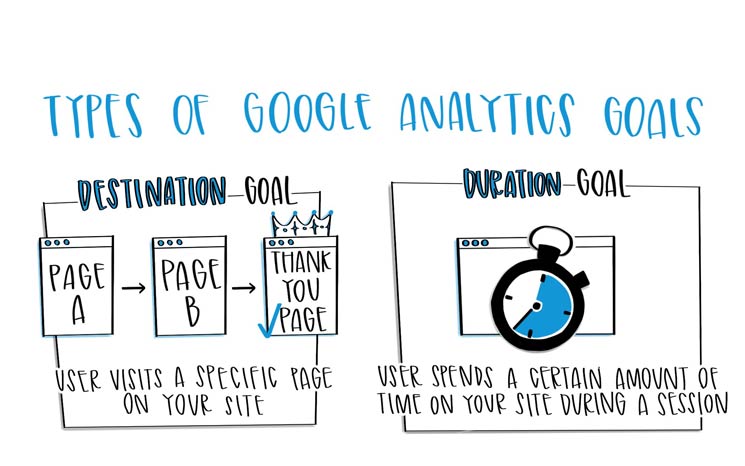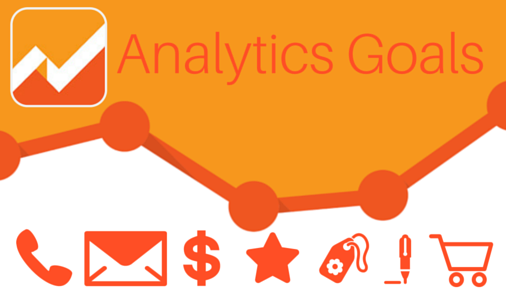What Data Is Google Analytics Goals Unable to Track and Why
Wiki Article
Introducing the Blind Spots: Understanding What Google Analytics Goals Can not Measure
In the realm of digital analytics, Google Analytics stands as an effective device for monitoring and examining on the internet user communications. Understanding what Google Analytics objectives can not determine is essential for obtaining a detailed view of customer behavior and involvement.Individual Actions on External Platforms
Comprehending exactly how customers engage on external systems is important for optimizing on the internet strategies. Outside platforms, such as social media networks, reference sites, and on-line discussion forums, play a substantial function in driving website traffic to a company's web site. By examining individual habits on these systems, services can get useful understandings right into the efficiency of their advertising efforts and the preferences of their target audience.One secret facet of user habits on external platforms is the reference resource. By tracking where the customers are coming from, organizations can recognize which systems are driving one of the most traffic to their website. This information can help business allocate their resources a lot more successfully, focusing on the platforms that produce the very best outcomes.

Offline Interactions and conversions
Analyzing user habits on outside systems supplies useful insights into online strategies; however, considering offline conversions and communications is just as essential for a comprehensive understanding of a company's total efficiency. While Google Analytics stands out at tracking on the internet interactions, it drops brief in catching the complete consumer trip that typically includes offline touchpoints. Offline conversions, such as in-store acquisitions or phone questions, play a considerable role in many organizations' success. Overlooking these interactions can result in an altered view of the effectiveness of advertising and marketing campaigns and overall organization performance.
Acknowledgment Beyond Last Click
When delving into the realm of digital advertising and marketing analytics, it comes to be vital to look past the solitary touchpoint of the last click for an extra comprehensive understanding of attribution. While Google Analytics offers useful understandings right into customer behavior, relying more helpful hints entirely on last-click attribution can be limiting - what data is google analytics goals unable to track. Attribution designs that go past the last click supply an extra nuanced sight of the client trip, thinking about all the touchpoints that lead to a conversionAcknowledgment beyond the last click allows marketing experts to appoint credit rating to various communications along the conversion find path, giving a more clear photo of the effectiveness of various advertising and marketing networks. By checking out multi-touch attribution models such as straight, time degeneration, or position-based attribution, businesses can better allot their advertising and marketing spending plans and maximize their methods for maximum influence.
Recognizing the influence of each touchpoint in the conversion process is critical for making notified decisions and maximizing ROI. By welcoming attribution past the last click, businesses can obtain deeper insights right into consumer behavior and tailor their marketing initiatives a lot more effectively.
Cross-Device and Cross-Browser Tracking

In a similar way, cross-browser tracking complements cross-device tracking by catching individual actions as they switch between different web browsers. Comprehending just how customers connect with websites on various internet browsers can help online marketers enhance their on-line experiences to make certain visit this website uniformity and capability throughout various platforms.
Qualitative Data and User Intent
Understanding user intent through qualitative information evaluation is crucial for developing targeted digital marketing techniques that resonate with the requirements and preferences of the target audience. Qualitative information provides insights right into the 'why' behind customer activities, shedding light on inspirations, feelings, and choices that quantitative data alone can not catch. By examining individual comments, comments, and interactions, marketing professionals can reveal valuable information concerning individual intent, enabling them to tailor their messaging, content, and offerings to much better line up with what their audience is looking for.Qualitative information likewise helps in recognizing the context in which individuals engage with a site or application. This contextual understanding makes it possible for online marketers to produce more pertinent and customized experiences, ultimately driving greater engagement and conversion prices. By diving into user intent with qualitative data evaluation, businesses can obtain a deeper understanding of their target market, causing more reliable marketing approaches that fulfill users' demands and expectations.
Verdict
Finally, Google Analytics objectives have limitations in gauging user habits on exterior systems, offline conversions, attribution past last click, cross-device and cross-browser tracking, and qualitative information connected to individual intent. what data is google analytics goals unable to track. It is very important for services to be familiar with these unseen areas in order to supplement their information evaluation with other tools and approaches to gain a much more thorough understanding of their target market and boost their overall electronic marketing methodsBy assessing user habits on these systems, organizations can gain important understandings right into the effectiveness of their advertising initiatives and the choices of their target audience.
Assessing user behavior on outside platforms gives beneficial insights into online methods; nonetheless, considering offline conversions and interactions is similarly critical for a comprehensive understanding of a company's overall performance.In digital advertising analytics, moving beyond last-click attribution to explore cross-device and cross-browser tracking is important for acquiring a holistic understanding of user interactions across numerous systems and tools. By analyzing user responses, remarks, and interactions, online marketers can discover valuable information concerning individual intent, enabling them to tailor their messaging, web content, and offerings to better align with what their audience is seeking.
By diving into customer intent via qualitative information analysis, companies can acquire a deeper understanding of their target audience, leading to extra effective advertising strategies that fulfill users' demands and expectations.
Report this wiki page